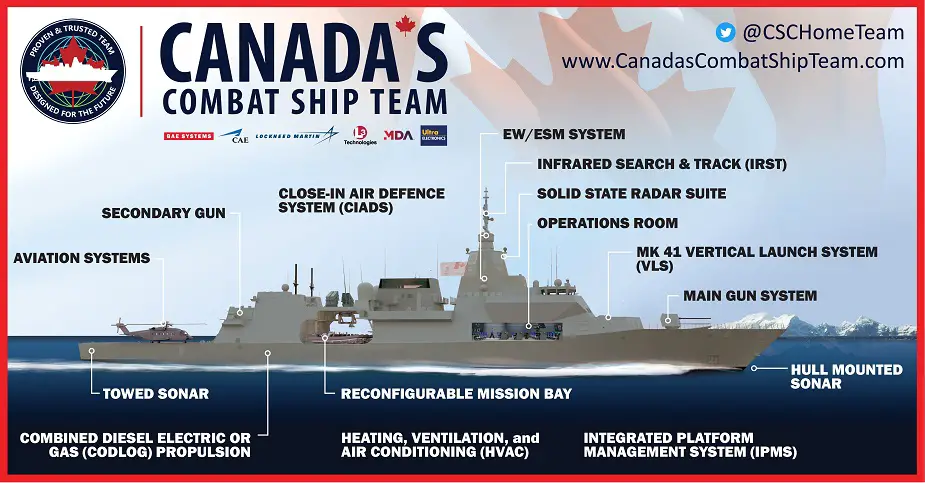The EASR radar that is reputed to be the RCN's preference is actually a variant of the AMDR (or SPY-6). It uses 9 Radar Module Assemblies (RMAs), identical to those used in the SPY-6, and according to Raytheon is as sensitive as SPY-1D(V) (
Raytheon: Enterprise Air Surveillance Radar). Interestingly, the CSC concept illustration on page 48 of Leadmark 2050 shows a SPY-type radar, characterized by the rather unique octagonal shape, whereas the Type 26 CSC "model" has a square radar panel, which is characteristic of EASR (but also other systems, see Note 2 below). The modularity of this system means the more RMAs you add the more sensitive the system, so perhaps there is an upgrade path built into the RCN's plans. Interoperabilty with NATO would be excellent, though that is more a function of the communications systems such as Link 16 and CEC than the actual radar. There are also obvious logistical advantages to having an American radar, that are attractive to the RCN.
Note1: This is the same radar the USN has specified for FFG(X).
Note2: It is also important to remember that while the Type 26 is the preferred design for CSC, the project is now in the last but arguably most important phase, which is the negotiation over IP, availability of systems, and pricing. ITAR proved to be a major stumbling block with the Halifax upgrade, and resulted in the RCN selecting many non-American systems in order to keep that project on schedule. This is why the radar on the Type 26 submission has been a bit of a mystery, whereas the other two competitors have been very candid about the radar in their proposals (Alion with APAR, and Navantia with CEAFAR2). If during the negotiations it is found that EASR is not available in an appropriate timeframe due to the ITAR approval process taking too long, or due to pricing, the LM submission can accommodate another system with relative ease. This is the beauty of the Type 26 - it's very flexible. Hensoldt's TRS-4D is one possibility, and some combination of APAR block 2 and a volume search radar is another. In other words, the LM submission is radar-agnostic. So, we will only know for sure sometime this winter when they finish negotiations and sign a development contract.



